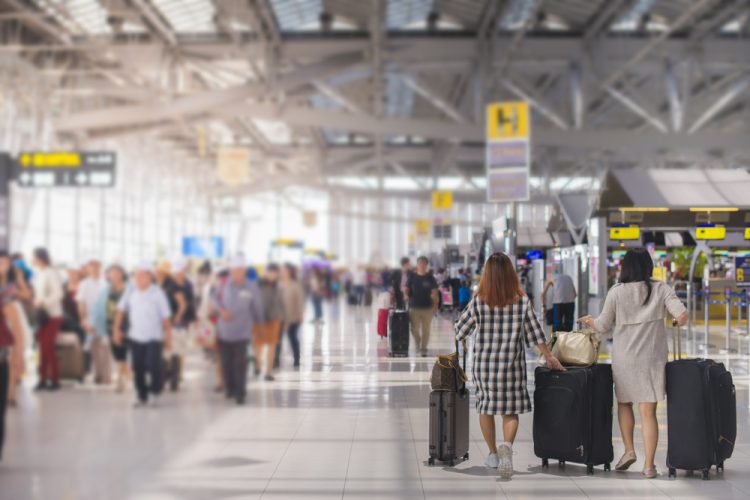European Travel Commission publish passenger behaviour trends in Long-Haul Travel Barometer
- Like
- Digg
- Del
- Tumblr
- VKontakte
- Buffer
- Love This
- Odnoklassniki
- Meneame
- Blogger
- Amazon
- Yahoo Mail
- Gmail
- AOL
- Newsvine
- HackerNews
- Evernote
- MySpace
- Mail.ru
- Viadeo
- Line
- Comments
- Yummly
- SMS
- Viber
- Telegram
- Subscribe
- Skype
- Facebook Messenger
- Kakao
- LiveJournal
- Yammer
- Edgar
- Fintel
- Mix
- Instapaper
- Copy Link
Posted: 7 February 2024 | International Airport Review | No comments yet
Travellers display reluctance to visit Europe, according to the Long-Haul Travel Barometer by the European Travel Commission.


Travellers display greater reluctance to visit Europe in the initial four months of the year.
Anticipations for international travel in 2024 are predominantly optimistic in key long-haul markets for Europe. However, travellers display greater reluctance to visit Europe in the initial four months of the year. This is according to the latest Long-Haul Travel Barometer (LHTB) 1/2024 published by the European Travel Commission (ETC) and Eurail BV.
The study offers a snapshot of 2024 travel sentiments and plans for the first four months. It analyses intention to travel to Europe in seven overseas markets – Australia, Brazil, Canada, China, Japan, South Korea, and the US. Key findings for 2024 include:
- High levels of optimism towards overseas travel in 2024 have been recorded in Brazil (76%), Australia (73%), Canada (72%), and South Korea (71%)
- In the US, intention to travel internationally remains consistent with 2023 levels, with 60% of respondents expressing a desire to do so
- Japan has seen a modest 5% increase in respondents planning an overseas journey since 2023, yet intention remains relatively low at 35%
- China is the only market where travel sentiment is in decline, recording a 14% decrease in long-distance travel intention. However, 64% of respondents still plan to embark on a long-haul trip in 2024
- Among those eager to travel overseas in all key markets in 2024, 75% plan to visit Europe, with the remaining 25% considering other regions.
Commenting following the publication of the LHTB 1/2024, Miguel Sanz, ETC’s President, said: “The evolving landscape of international travel demands that Europe adapt to the diverse preferences and expectations of travellers. It is especially clear that safety and economic factors play a pivotal role in travellers’ choice of destinations. Nevertheless, Europe’s enduring appeal and the resilience of its tourism sector remain steadfast”.
“In 2024, European tourism faces a promising yet challenging year, requiring the industry to manage the recovering consumer demand and embrace responsible and sustainable practices,” he added.
Safety, infrastructure and affordability key to selecting a destination
For travellers eager to visit Europe this year, safety stands as the primary factor influencing their destination choice, with 45% of respondents across all markets prioritising a secure travel environment. High-quality tourism infrastructure ranks second, with 38% considering it essential.
Renowned landmarks and affordable services also hold significant weight in destination selection, with 35% of overseas travellers naming these as their top priorities. Notably, Canada, the US and Australia stand out for their strong focus on affordability. Pleasant weather conditions play an important role in travel decisions, being considered crucial by 31% of respondents on average.
Beyond these primary considerations, Korean and Chinese holidaymakers exhibit a strong preference for destinations that preserve their natural and cultural heritage, with 33% and 32% of respondents prioritising this factor, respectively. This trend indicates a unique preference for destinations that maintain their authenticity.
Among those choosing not to travel overseas to Europe in 2024, 36% cite substantial travel costs as the main deterrent, with limited vacation time being another significant factor for 12% of respondents.
A mix of optimism and caution shapes travel plans in early 2024
Despite the challenges posed by rising travel costs and the growing appeal of alternative regions, Europe still holds its appeal to long-haul travellers in the first four months of 2024, January to April:
- Chinese (50%) and Brazilians (49%) show the strongest intent to visit Europe. In both markets, the positive sentiment is driven by younger, higher-income respondents
- Australia and South Korea present moderate travel sentiment, with close to 40% considering European trips by April
- Canadians and Americans express interest in travelling to Europe this year, but enthusiasm remains subdued in early 2024. Less than a third of respondents in each market (28%) are planning a European trip during this period
- Similarly, despite the increase in travel intention among Japanese travellers this year, the level of optimism for visiting Europe in January-April is minimal, with only 14% contemplating a trip to the region.
On average, international travellers plan to visit three European countries during their next trip. To accommodate their busy itineraries, most (58%) are considering holidays ranging from 1-2 weeks. Australians plan to stay even longer, with half of the respondents considering trips lasting more than two weeks.
The data also reveals diverse daily budget preferences, underscoring the need for travel providers to offer experiences that cater to a variety of visitors, from high-end spenders to budget-conscious travellers. Across all markets, 38% of respondents are willing to spend more than €200 per day – a budget particularly popular among Chinese (78%) and Brazilian (50%) travellers.
A mid-range budget of €100-€200 stands as the second most favoured option, chosen by 31% of long-haul travellers. This budget range is especially popular in Australia (40%) and South Korea (42%). Only 21% of respondents were considering a daily budget of less than €100, though this number counted 36% of Canadian travellers.
Related topics
Passenger experience and seamless travel, Safety, Sustainable development


















